
Free time not being in short supply in these days of sheltering in place, it’s time to review more “Green Police” videos to see how well our reviews and analyses have aged. If you missed the first few rounds of our product retrospective, click here for the original post and here for Volume 2.
A few years back, green remodeler Michael Anschel of Minneapolis-based OA Design+Build+Architecture and I made a video series called the “Green Police” for The Journal of Light Construction and Hanley Wood. We reviewed new products with humor, but also a critical eye, and made predictions on how they’d do in the market. This series of posts is a look back at the original reviews with some insight and some hindsight.
Back where it all began
Speaking of aged, I dug out some of our original videos, from before we were officially christened the “Green Police,” complete with some seriously funky intro music, and reminisced with Michael, about old times, fighting the crime of greenwashing together.
We liked the Quick Curve Plate as soon as we saw it. It’s a neat product from Flex-Ability Concepts that saves time and material when building curved walls. After seeing this product, Michael went on a curved wall spree that drove his drywall and trim crews batty. Michael has settled down, but fortunately, this product is still around.
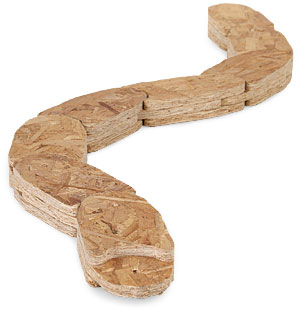
Diamond Pier Foundation System replaces concrete footings for decks, porches, and even small buildings with a pre-cast concrete head and steel pins driven into stable soil. It eliminates excavation, poured in place concrete, form work, and the wait time between pouring a footing and when framing can begin. All these years later, I am surprised that we don’t see these footings used more often. They’re a great problem solver.
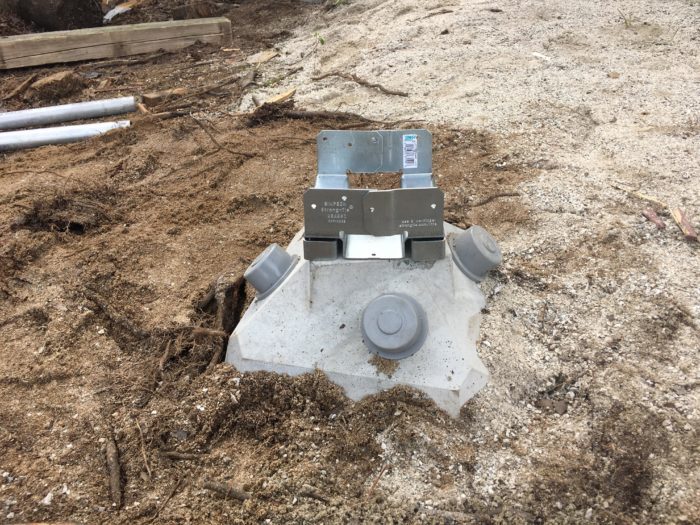
The company has gone on to produce a series of grade beams and more complex steel posts that all make use of the same pinning technology.
We wrapped up this video with a review of Festool products, which we both like. They aren’t inexpensive but their system is very well integrated, and everything is of consistently high quality. In Michael’s opinion, Festool has cemented their place as the Arcyterx of tools.
“Green Police” on patrol
Moving forward in time to when we officially became the “Green Police,” one of our early videos was a review of surface materials.
We started with Accoya, an acetylated wood that both predated and outlasted one of our favorite products at the time, Perennial Wood. Accoya is still a great product, available internationally, but it has not had a big impact in the residential market. Michael finds it utterly baffling what architects will glom onto and what they will ignore. They keep trying to spec things like heat treated Ash as an exterior cladding (crazy train according to Michael) rather than use the pickled stuff like Accoya that looks as good and performs better.
Michael had fun playing plasterer with American Clay, a traditional plaster wall finish, similar to Venetian Plaster. It’s a premium product with a narrow market, but it creates a beautiful finish surface with texture and a solid feel that you can’t get with regular finished drywall.
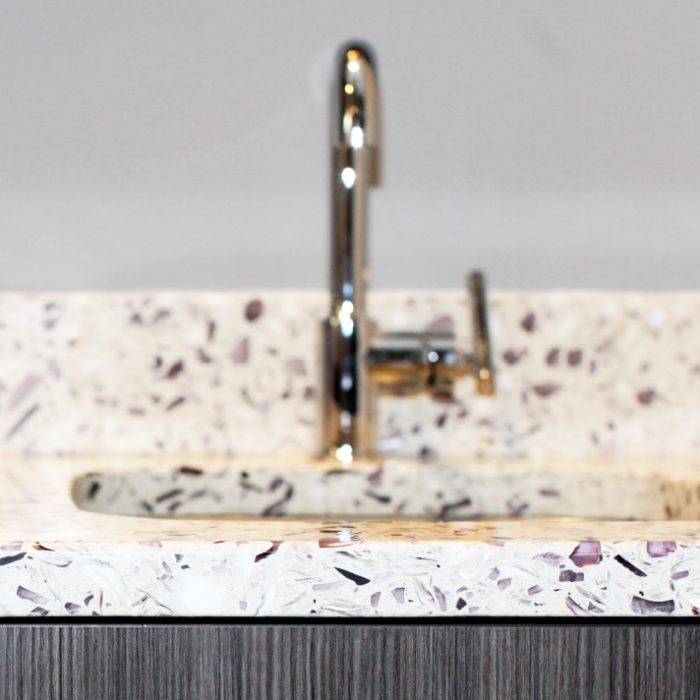
We liked Crossville tile, particularly their “Tile Take Back” recycling program which targets recycling 12 million pounds of porcelain waste annually from both tile and plumbing fixtures in an arrangement with Toto, all of which is used in creating new recycled content tile. They claim to be a net consumer of waste—they recycle more waste into new products than they generate from manufacturing. Crossville continues to lead the industry and produce high recycled content tile and continue the their recycling program to this day.
Our surfaces video wraps up with a look at Vetrrazo, a Cradle-to-Cradle-certified recycled glass solid surface product for counters and other applications. As the name implies, Vetrazzo is sort of related to terrazzo, providing a similar look in a prefabricated material with a high recycled content. This company had some challenges after completing their UL EPD (Environmental Product Declaration), eventually becoming part of Polycore, a large stone producer. They were certainly ahead of their time, and it still remains to be seen if they can capture a significant share of the market.
Plumbing the depths
When reviewing plumbing products, while we agreed on Kohler’s new-at-the-time dual flush toilets, and a nice quiet pressure assist 1 gallon-per-flush model, we agreed to disagree on Delta Touch Faucets.
Michael went so far as to install one in his kitchen, and despite having to replace the solenoid valve (Delta happily sent out a new part free of charge) he still loves it. I installed one as well, and found the touch feature both annoying and superfluous, eventually disabling it. Michael, under the mistaken impression that I don’t cook much, thinks that I would like it more if it was an expert a chef as he is.
Heat pump water heaters, at the time of our review, typically had a coefficient of performance (COP) of about 2. Performance has improved significantly since then, typically coming in with a COP of 3.5 or more, and Uniform Energy Factors (UEF) in the 2.8 range.
While Michael had, and still has, a negative opinion on them, I am more amenable to the technology. They do have some downsides, particularly in cold climates where they remove warm air from the house and replace it with cool air from the internal heat pump unless ducted to the exterior. We were both concerned about the complicated technology and potential for failure, and Michael was clearly distressed that he couldn’t reach the filter for maintenance. The Electrify Everything crowd is madly in love with them, but due to high first costs they are still a relatively small portion of the market.
Three fun guys
Possibly our favorite product was Mycellium insulation—that’s right, mushrooms— and Michael had a taste. Alex Wilson of Building Green and The Resilient Design Institute joined us for this review and later wrote about the material. He particularly liked it because it doesn’t require flame retardants. While it has seen some growth in packaging and other areas, it remains a dream as a building product.
Ecovative Design, the company that produces the product we reviewed is still around, although they have yet to create a building insulation product. Michael and I agree that the sales process around installing mushroom insulation in the walls might be a smidge more challenging than getting anti-vaxxers to wear their damn masks during the Coronavirus pandemic.
Hope you enjoyed our reminiscing about the days when you could actually hang out with people in public places. Here’s hoping that we will once again be able to meet in person.
-Carl Seville is a green builder, educator, and consultant on sustainability to the residential construction industry. After a 25-year career in the remodeling industry, he and a partner founded a company, SK Collaborative.
Weekly Newsletter
Get building science and energy efficiency advice, plus special offers, in your inbox.





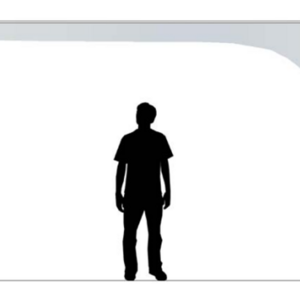


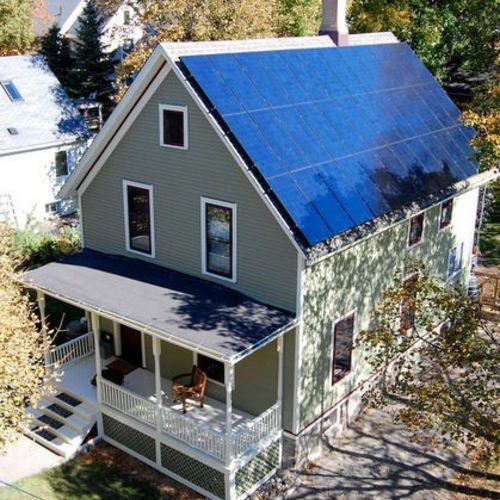






10 Comments
Carl, what does Michael have against HPWH's besides filter accessibility?
It's mostly because he comes from a cold climate and the idea of cooling your house to heat water doesn't make much sense. I think he is also concerned about the complexity of the technology, although so far they seem to have a pretty good track record. Also, he can sometimes get an attitude about things. He doesn't really care about filter access, that was just my making fun of his height.
I elected not to install one in my house for several reasons, noise being one as I didn't have enough space to install it without a louvered door to the living area, and also with only 2 people in my house, the energy savings was not that significant, so I went with a standard Rheem Marathon.
Don't all HPWH's have resistance elements so that if noise is bothering you, or if it's making the space too cool, you can switch the compressor and fan off?
They do, but then they just run as a standard electric heater and you don't get the benefit of the heat pump efficiency.
Yeah, but how often is noise or being too cool a problem?
Charles - the issue of being too cool is not an issue in my climate (3), but the noise could be. Because of the design of my house, I would have needed a louver door or other opening to the main living area and I elected to not go that route. Overall my home performs very well, better than many passive house projects in actual energy use, so I am confident that my decision to not use a HPWH was sound.
Some higher end heat pump water heaters do not have resistance elements, except for small elements used to protect the system components from freezing.
How can a HPWH with fewer options be termed "higher end"?
For HPWH's (and heat pump heating and cooling as an integrated system), have you seen and reviewed Chiltrix? https://www.chiltrix.com/ by Hostpot Energy?
Their systems look fantastic!
I have heard of Chilltrix but do not have any experience with it. I like the idea of combined HVAC and water heating. Daikin and some other VRF manufacturers either have it or are looking at it, but it seems to be a bit of a challenge to bring to market.
Log in or create an account to post a comment.
Sign up Log in